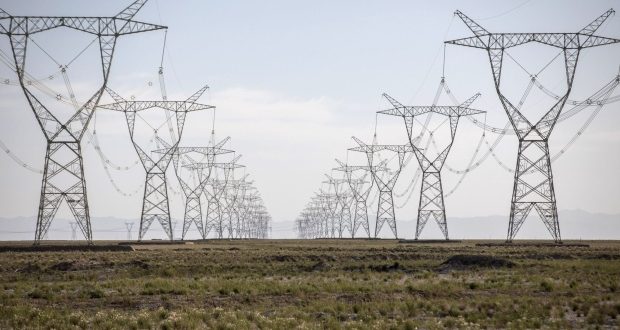International Energy Agency’s latest electricity markets update confrms major drop in emissions in 2020, but warns that coal and gas-fired generation will bounce back next year
Global renewable energy generation is expected to grow by seven per cent in 2020, further bolstering record shares of the power mix for clean power sources after plummeting electricity demand during the coronavirus crisis saw fossil fuel generation marginalised.
That is one of the top line conclusions of a new global electricity markets report published today by the International Energy Agency (IEA), which summarises the influential organisation’s projections for the full year.
The analysis predicts that electricity demand is set to plummet by two per cent this year, the largest drop seen since the mid-20th century, after Covid-19 lockdowns curtailed economic and social activity around the world.
Renewables were the only power generation source to weather the slump, the report notes, thanks to clean energy’s priority access to the grid and expanding capacity worldwide. Despite coronavirus shutdowns slowing the deployment of new clean power capacity in the first half of the year, renewables still remain on track to achieve record net capacity additions of 198GW this year, according to the analysis.
In contrast, coal and gas-fired generation are expected to slump by a record five and two per cent, respectively, according to the report.
In its update, the IEA notes that its projected decline in electricity demand is significantly less acute than the five per cent decrease it forecast in April, a discrepancy it attributed to an underestimation of China and India’s rate of recovery from initial pandemic lockdowns.
Electricity demand in China, which is responsible for 28 per cent of the world’s electricity consumption, is set to grow by two per cent in 2020, despite it experiencing a drop in demand in the first quarter of 2020, when the country locked down large swathes of its economy in response to the coronavirus outbreak in its Wuhan province.
But China remains an outlier to the global trend, the update notes, as the only major economy to see electricity demand rise in 2020. Countries in Europe are expected to see the greatest declines in electricity consumption, with the UK expected to experience one of the most dramatic falls at six per cent, the analysis reveals.
Overall, the agency predicts that carbon emissions produced by the power sector are set to nosedive by five per cent this year, a figure it underscores is a “much bigger decline than the forecast decline in global electricity demand” due to the surge in renewable generation. Carbon emissions are expected to slump most in the European Union, where a fall of 17 per cent is expected, and North America, where a 10 per cent cut is projected.
Looking to the year ahead, the IEA predicts that global electricity demand will rebound as the global economy starts its recovery from the ravages of the pandemic. However, it warns the sector’s projected uptick of three per cent will be modest, and “rather low” when compared to the 7.2 per cent jump seen in 2010 after the financial crisis took a 0.6 per cent bite out of electricity demand the year prior.
And while stressing that the growth of renewables should remain 2020’s “lead story”, the report also warns that coal and gas generation are likely bounce back next year. While the rapid growth of renewables and nuclear will continue to erode fossil fuel generation’s dominance of electricity grid in advanced economies, coal and gas fired generation is expected to continue to grow in developing countries, where new demand for electricity continues to outstrip the pace of new renewable capacity, it argues.
Overall, the agency predicts that coal- and gas-fired generation will grow by three and one per cent respectively next year, driving power sector emissions up by two per cent, despite a projected increase in clean power generation that is expected to see its share of the global electricity mix rise from a 28 to 29 per cent share.
Elsewhere, the report underscores that wholesale electricity prices plummeted in 2020 amid falling electricity demand and fuel prices and increased renewable capacity. The IEA’s wholesale electricity market price index, which tracks price movements in major advanced economies, shows an average price decline of 28 per cent this year, following a 12 per cent decline the year prior.
However, the projections stress that if countries are to deliver on the more ambitious climate goals announced at this weekend’s Climate Ambition Summit then further policy interventions and increased investment will be required to accelerate the pace at which fossil fuels are being phased out from national power grids, despite the encouraging trends for renewables.

 Iran Energy News Oil, Gas, Petrochemical and Energy Field Specialized Channel
Iran Energy News Oil, Gas, Petrochemical and Energy Field Specialized Channel



